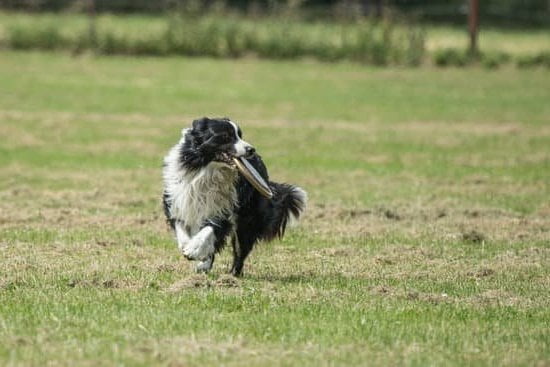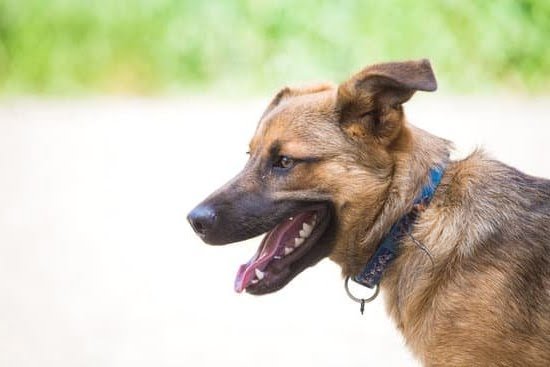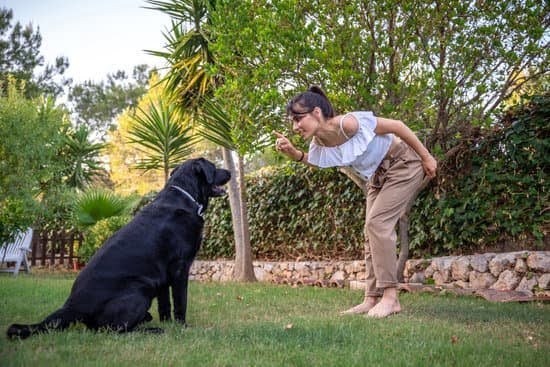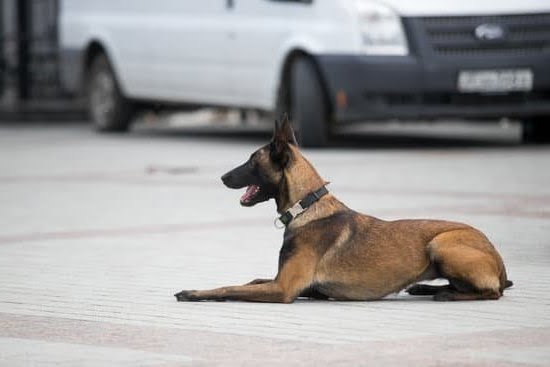Potty training is an essential aspect of owning a dog at any age, but it can be particularly challenging when it comes to older dogs. In this article, we will explore the process of potty training a 10-year-old dog, addressing the unique challenges that may arise and providing helpful tips and strategies to overcome them.
It’s never too late to teach an old dog new tricks, and with patience, consistency, and the right approach, you can successfully potty train your furry companion.
Potty training is crucial for dogs of all ages as it not only promotes good hygiene but also creates a harmonious living environment for both dogs and their owners. However, potty training a 10-year-old dog presents its own set of challenges.
Unlike puppies who are more receptive to learning new behaviors, older dogs may have ingrained habits and attitudes that make the training process more difficult. But rest assured, with the right techniques and understanding of your dog’s specific needs, you can achieve success.
In this article, we will delve into the potential reasons behind why your 10-year-old dog may struggle with potty training. We’ll explore behavioral issues such as anxiety or fear as well as physical obstacles like mobility issues or health conditions.
By understanding these challenges, you can tailor your approach accordingly and address any underlying factors that may hinder the training process. So let’s get started on this rewarding journey of potty training your 10 year old dog.
Understanding the Challenges
Potty training a 10-year-old dog can present unique challenges compared to training a younger dog. It is important to understand the potential reasons behind the dog’s inability to be potty trained and address any behavioral or physical issues that may hinder the training process.
Potential Reasons for Inability to be Potty Trained
There could be various reasons why a 10-year-old dog has not been successfully potty trained. It is essential to identify these reasons in order to address them effectively. Some potential reasons include:
- Health Issues: Physical ailments such as bladder infections, urinary tract problems, or gastrointestinal issues can lead to frequent accidents. Consult with a veterinarian to rule out any underlying health concerns.
- Previous Trauma: Dogs that have experienced past trauma, such as abuse or neglect, may exhibit fear or anxiety-related behaviors that affect their ability to eliminate in appropriate areas.
- Stubbornness or Lack of Consistency: Older dogs may have developed long-standing habits that are difficult to break. Inconsistent potty training methods in the past might have contributed to confusion and lack of progress.
Addressing Behavioral or Physical Issues
Once you have identified the potential reasons behind your dog’s inability to be potty trained, it is crucial to address any behavioral or physical issues appropriately. Consider the following approaches:
- Medical Check-up: Schedule a thorough check-up with a veterinarian to ensure there are no underlying physical conditions contributing to your dog’s inability to be potty trained.
- Behavior Modification Techniques: Work with a professional dog trainer or behaviorist who specializes in older dogs and can help you assess and modify any behavioral issues affecting your dog’s potty training progress.
- Patience and Understanding: Recognize that older dogs may take longer to adjust their habits compared to younger puppies due to ingrained routines and learned behaviors. Be patient, persistent, and understanding throughout the training process.
Understanding the challenges of potty training a 10-year-old dog is crucial for setting realistic expectations and developing effective strategies to overcome them. With proper understanding and patience, you can successfully potty train your older dog and help them develop new habits.
Assessing the Current Situation
When potty training a 10-year-old dog, it is essential to first assess the current situation and understand the dog’s habits and patterns. By evaluating these factors, you can tailor your training approach accordingly.
One important step is to encourage readers to evaluate the dog’s current bathroom habits. This includes observing when and where accidents occur, as well as noting any consistent patterns in their behavior. Keeping a record of accidents and bathroom breaks can be incredibly helpful in identifying trends and understanding your dog’s specific needs.
To keep track of this information, consider creating an ordered list of key observations. Note the times when accidents happen, how frequent they are, and any possible triggers that may be causing them. Also, create another list for successful bathroom breaks or instances where your dog displays the desired behavior. By analyzing these lists over time, you may start to recognize patterns that will assist you in developing an effective training strategy.
Furthermore, it’s important to emphasize consistency throughout this assessment process. Dogs thrive on routine, so keeping a consistent schedule for feeding and bathroom breaks will help establish expectations for both you and your furry friend. Use an unordered list to outline a sample daily routine that includes specific times for meals and regular bathroom breaks.
By accurately assessing your dog’s current situation and establishing a routine based on their needs, you will be better equipped to handle the challenges of potty training a 10-year-old dog. Remember that patience and persistence are key during this process as every dog is unique and may require different approaches.
In the next sections, we will discuss how consulting a veterinarian, utilizing positive reinforcement techniques, and introducing crate training can further aid in successfully potty training your older dog.
Consulting a Veterinarian
Importance of Seeking Professional Guidance
One of the most crucial steps in potty training a 10-year-old dog is consulting a veterinarian. While it’s possible to try various methods and techniques at home, a professional’s guidance can make a significant difference in the process. A veterinarian will have the necessary expertise and experience to address any underlying behavioral or medical issues that may be hindering your dog’s ability to be potty trained.
By seeking professional guidance, you can ensure that you are not overlooking any potential health concerns that could be contributing to your dog’s inability to be potty trained. Vet professionals can conduct thorough evaluations to rule out any medical conditions such as urinary tract infections, bladder stones, or diabetes, which could all impact your dog’s bathroom habits. Additionally, they may provide insights into specific behavioral issues that might require more specialized training approaches.
Finding the Right Veterinarian
When looking for a veterinarian experienced in potty training older dogs, it’s essential to do some research and find someone who understands the unique challenges of training an older canine. Seek recommendations from friends or fellow dog owners who have gone through similar experiences or reach out to local dog trainers for referrals.
During your initial consultation with a potential veterinarian, ask specific questions about their experience with older dogs and their success rates in potty training cases. It’s important to feel comfortable and confident in their abilities before committing to their services. Remember that finding the right professional can greatly enhance your chances of successfully potty training your 10-year-old dog.
Working Together for Success
Collaborating with a veterinarian on your dog’s potty training journey can create a comprehensive approach tailored specifically for your pet’s needs. They will likely provide you with personalized advice based on evaluating your dog’s current situation and behaviors. Working together as a team, you and your veterinarian can develop a training plan that takes into account any medical or behavioral issues, while also providing you with ongoing support and guidance throughout the process.
It’s important to remember that potty training an older dog may take more time and patience compared to training a young puppy. However, with the right veterinarian by your side, you can navigate any challenges that arise and increase the likelihood of successful potty training for your 10-year-old furry friend.
Creating a Consistent Routine
When it comes to potty training a 10-year-old dog, establishing a consistent routine is crucial. Dogs thrive on structure and predictability, and having a regular schedule for feeding and bathroom breaks can greatly aid in the training process. Here are some insights on the significance of consistency in potty training and how to accomplish it effectively.
Establish a Regular Schedule
One of the first steps in creating a consistent routine is to establish a regular schedule for feeding and bathroom breaks. Dogs have natural biological rhythms, so it’s important to align their routine with these patterns. Determine specific times for meals and bathroom breaks and try to stick to those as closely as possible. This not only helps regulate your dog’s digestion but also sets clear expectations for when they should go potty.
Be Consistent with Bathroom Breaks
Consistency is key in potty training, especially with an older dog. Take your dog outside or to their designated potty area at regular intervals throughout the day, preferably after meals or naps when they are more likely to need to relieve themselves.
Stay with them during these trips outside and use verbal cues such as “go potty” or “do your business” in a calm and encouraging tone. Reinforce positive behavior by providing praise or treats when they successfully go potty outside.
Use Reminders
To further reinforce the routine, consider using reminders or prompts throughout the day. Set alarms on your phone or place sticky notes around your home as gentle reminders of bathroom break times. This will help both you and your dog stay on track with the established routine.
By creating and following a consistent routine, you are setting up your 10-year-old dog for success in their potty training journey. However, it’s important to remember that each dog is different, and results may vary. Be patient, stay consistent, and eventually, your dog will develop good potty habits with your guidance.
Positive Reinforcement techniques
Highlighting the Effectiveness of Positive Reinforcement
Positive reinforcement is a powerful training technique that can be especially helpful when potty training a 10-year-old dog. This method involves rewarding and praising your dog for exhibiting desired behaviors, such as going to the bathroom outside. By focusing on positive reinforcement, you can create a pleasant and encouraging training environment for your dog.
Different Rewards and Praise Methods Suitable for Older Dogs
When it comes to positive reinforcement, it’s essential to find rewards and praise methods that resonate with your older dog. Treats are commonly used as rewards, but it’s important to choose healthy options suitable for their age and any dietary restrictions they may have. Additionally, some dogs respond well to verbal praise or petting as a form of reward.
You can also consider incorporating playtime or short walks as rewards since physical activity can be enjoyable for older dogs. Experiment with different techniques to see what motivates your furry friend the most and helps reinforce their good behavior during potty training.
Consistency in Rewarding and Praising
Consistency is key when using positive reinforcement techniques. It’s important to reward and praise your dog immediately after they exhibit the desired behavior. By doing so, you help them associate the action with the positive outcome.
Make sure your rewards and praise are genuine and enthusiastic. Dogs are much more likely to respond positively when they sense your excitement and appreciation for their actions. Consistently rewarding good behavior will encourage your 10-year-old dog to continue using appropriate bathroom habits.
Remember that every dog is unique, so be attentive to their individual preferences when it comes to positive reinforcement techniques. The goal is to make potty training a positive experience for both you and your furry friend, helping them overcome any challenges they may face due to their age.
Introducing Crate Training
Crate training can be a helpful tool when potty training a 10-year-old dog. While some people may associate crate training with puppies, it can also be effective for older dogs who are struggling with housebreaking. Crate training provides a safe and comfortable space for your dog and can help in establishing good bathroom habits.
Discuss the benefits of using a crate for potty training purposes
Using a crate during the potty training process has several advantages. First, it helps to create a den-like environment for your dog, which appeals to their natural instincts as den animals. Dogs have an instinctual desire to keep their sleeping areas clean, so by utilizing a crate, you are encouraging them to hold their bladder and bowel movements until they are taken outside.
Secondly, crate training provides structure and routine to the potty training process. By keeping your dog in the crate when you are unable to supervise them, you prevent accidents from occurring indoors. This helps establish consistency and teaches the dog that they should only eliminate outside.
Lastly, crates serve as a management tool that helps prevent your dog from wandering off and having access to areas where accidents may occur or forbidden items may be found. It gives you peace of mind knowing that your dog is safe while allowing you time to focus on other tasks.
Guide readers on the gradual process of introducing a crate to an older dog
Introducing a crate to an older dog should be done gradually to ensure their comfort and acceptance of this new space. Begin by positioning the crate in an area where your dog spends most of their time within your home, such as the living room or kitchen.
Encourage your dog’s curiosity by leaving treats around and inside the open crate. Allow them to explore at their own pace without any pressure or forcefulness. Make sure that the crate is inviting by placing blankets or bedding inside for added comfort.
Once your dog starts showing interest in the crate, begin feeding them near it and gradually move their food bowl closer to the crate’s opening. This helps them associate positive experiences with the crate and builds a positive reinforcement foundation.
As your dog becomes more comfortable with being inside the crate, you can start closing the door for short periods while you are present nearby. Increase the duration gradually until they become accustomed to staying inside with the door closed without displaying any signs of distress.
Remember, patience is key during this process. Every dog is different, and some may take longer to adjust than others. It is crucial to go at their pace and reinforce positive behaviors inside the crate through treats or verbal praise.
By implementing these steps, you will create a pleasant association between your older dog and their crate, making it an effective tool in potty training as well as providing a safe space for your furry friend.
Addressing Accidents and Setbacks
Accidents can be expected during the potty training process, especially when dealing with an older dog. It is important for owners to remain patient and understanding when accidents occur. Instead of getting frustrated or scolding the dog, it is essential to address accidents in a positive and constructive manner.
Firstly, it is crucial not to punish the dog for accidents. Punishment will only create fear and anxiety in the dog, which can hinder their progress in potty training. Instead, owners should remain calm and simply clean up the mess without drawing attention to it. Using an enzymatic cleaner specifically designed for pet messes will help eliminate any lingering odor that may attract the dog to go in that spot again.
Secondly, owners should try to identify any patterns or triggers that may have caused the accident. This could include things like a sudden change in routine, being left alone for too long, or even a medical issue. By identifying these triggers, owners can take steps to prevent future accidents from occurring.
If accidents become a frequent occurrence despite consistent efforts with potty training, it may be necessary to consult with a veterinarian. The vet can help rule out any underlying medical conditions that may be contributing to the issue. They can also provide guidance on how to modify the training approach based on the specific needs of the individual dog.
In summary, accidents are a normal part of potty training an older dog and should be approached with patience and understanding. Punishment should be avoided, and instead, focus should be placed on cleaning up properly and identifying potential triggers for accidents. If accidents persist despite consistent efforts, seeking advice from a veterinarian is recommended.
| Common Causes of Accidents | Suggestions |
|---|---|
| Inconsistent routine | Establish a regular feeding and bathroom schedule. |
| Anxiety or fear | Create a calm and positive environment during potty training. |
| Underlying medical conditions | Consult a veterinarian to rule out any health issues. |
| Lack of supervision | Ensure the dog is properly supervised, especially during potty training. |
Securing the Environment
When potty training a 10-year-old dog, it is crucial to secure the environment to prevent any accidents or confusion. Older dogs may be set in their ways and accustomed to certain areas of the house for bathroom breaks, so making the necessary adjustments can help them learn new habits more effectively.
One way to secure the environment is by implementing baby gates or barriers to restrict access to certain areas of the house. This can be particularly useful if you have rooms with carpeting or other surfaces that are difficult to clean. By limiting their access to these spaces, you reduce the chances of accidents occurring and make it easier for your dog to understand where they should go.
Additionally, it is important to eliminate any potential indoor obstacles that may confuse your dog during potty training. This includes removing rugs or mats that resemble materials they may associate with going potty, such as grass or carpet. It’s also a good idea to store away any items that emit odors similar to urine or feces, as these could attract your dog and lead them astray.
To further secure the environment, consider using enzymatic cleaners specifically designed for pet messes on any accident spots. These cleaners break down odor-causing bacteria, reducing the likelihood of your dog returning to those areas for future elimination.
Securing the environment is an essential step in potty training a 10-year-old dog because it helps establish clear boundaries and reduces confusion. By creating a controlled space and eliminating potential obstacles, you set your older dog up for success in learning their new potty routine.
| Benefits: | Guidance |
|---|---|
| – Reduces chances of accidents | – Use baby gates or barriers |
| – Establishes clear boundaries | – Remove rugs or mats that resemble potty surfaces |
| – Reduces confusion for the dog | – Use enzymatic cleaners on accident spots |
Patience and Persistence
When it comes to potty training a 10-year-old dog, patience and persistence are key. It’s important to remember that older dogs may take longer to learn new habits and behaviors compared to younger puppies. They have likely grown accustomed to their routine and breaking that habit can be challenging. However, with the right approach and consistent training, it is possible to successfully potty train an older dog.
One of the most important things during this process is to remain patient with your dog. Understand that accidents may happen, and it is crucial not to get frustrated or lose hope. Remember that your dog is trying their best to adapt to the new routine and behavior expectations. Consistency is essential in reinforcing positive habits, so it’s important to persistently follow the established training methods.
To ensure you remain patient and persistent throughout the potty training process, it can be helpful to set realistic expectations. Recognize that progress will happen gradually, so celebrate even small victories along the way. Keeping track of your dog’s successes and rewarding them for their efforts can help both you and your furry friend stay motivated.
In addition, make sure to provide plenty of praise and rewards when your dog successfully goes potty at the designated area. This positive reinforcement will help reinforce their learned behavior and encourage them to continue doing well. Remember, every step forward is a step in the right direction.
| Patience | Persistence |
|---|---|
| Remain calm even if accidents occur | Consistently follow the established training methods |
| Celebrate small victories along the way | Keep track of successes and reward good behavior |
| Set realistic expectations | Provide plenty of praise and rewards for good behavior |
Conclusion
In conclusion, potty training a 10-year-old dog may present unique challenges, but it is not an impossible task. Throughout this article, we have discussed various strategies and techniques to help you in your journey of potty training your older dog.
Firstly, it is essential to understand the potential reasons behind your dog’s inability to be potty trained and address any behavioral or physical issues that may hinder the training process. Consulting a veterinarian experienced in potty training older dogs can provide valuable guidance and support.
Creating a consistent routine is another crucial aspect of successful potty training. By establishing regular feeding times and bathroom breaks, you can help your dog develop a reliable schedule. Positive reinforcement techniques play a vital role in motivating your 10-year-old dog during the training process. Whether it’s using treats, toys, or praise, finding what rewards work best for your furry companion will go a long way in reinforcing good behavior.
Introducing crate training can also be beneficial for potty training purposes. Gradually acclimating your dog to the crate provides them with a safe and secure space while minimizing accidents inside the house.
Throughout this process, accidents and setbacks are bound to happen. It is important not to get discouraged but instead learn from these incidents and adjust your approach if needed. Patience and persistence are key attributes that will greatly contribute to your success.
Frequently Asked Questions
Can you potty train a 10 year old dog?
Potty training a 10-year-old dog can be challenging, but it is definitely possible with consistency, patience, and understanding. Older dogs may have ingrained habits or health issues that have contributed to their lack of potty training. It’s important to rule out any medical conditions or physical limitations that could be affecting their ability to control their bladder and bowels.
Once any underlying issues are addressed, the key is to establish a regular schedule for bathroom breaks and provide positive reinforcement through rewards and praise whenever they eliminate in the appropriate place. Consistency is crucial, as older dogs may take longer to break old habits and develop new ones.
Can you housebreak an 11 year old dog?
Housebreaking an 11-year-old dog also requires patience and consistency, but it can be done successfully. Similar to potty training a 10-year-old dog, it’s essential to determine if there are any medical conditions or physical limitations hindering their ability to control elimination. Once cleared by a veterinarian, establishing a routine with regular bathroom breaks becomes paramount.
Accidents should be calmly cleaned up without punishment or scolding the dog as this can cause anxiety and delay progress. Positive reinforcement through treats, praise, and possibly crate training can help the dog understand the desired behavior of eliminating outside or in a designated area indoors.
Why is my 10 year old not potty trained?
There could be several reasons why your 10-year-old dog is not potty trained. One possibility is that they were never properly trained as a puppy or experienced inconsistent training throughout their life.
Another reason could be health-related issues such as urinary tract infections, mobility problems making it difficult for them to reach an appropriate spot in time, or age-related decline affecting their ability to control elimination effectively.

Welcome to the blog! I am a professional dog trainer and have been working with dogs for many years. In this blog, I will be discussing various topics related to dog training, including tips, tricks, and advice. I hope you find this information helpful and informative. Thanks for reading!





